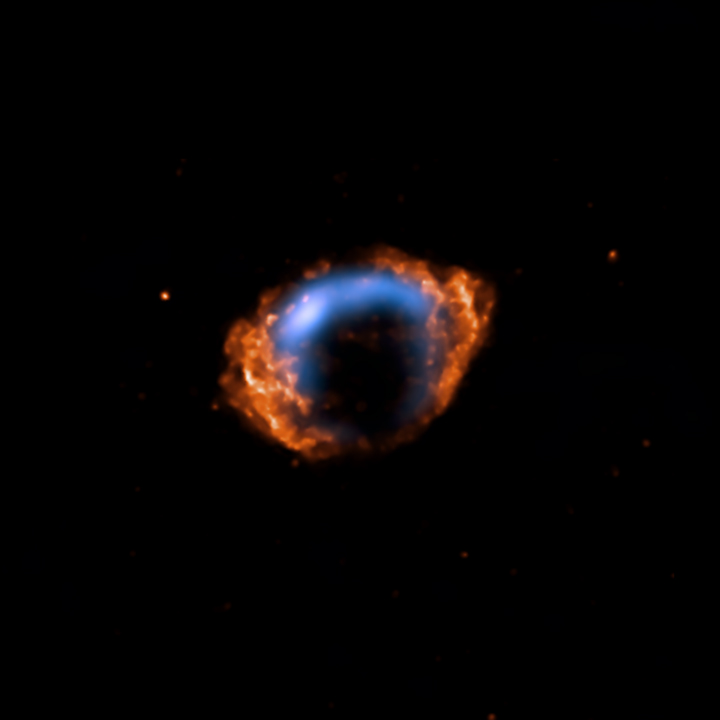
 Credit: NASA/CXC/NCSU/S.Reynolds et al. (X-ray); (NSF/NRAO/VLA/Cambridge/D.Green et al. (radio)
Credit: NASA/CXC/NCSU/S.Reynolds et al. (X-ray); (NSF/NRAO/VLA/Cambridge/D.Green et al. (radio)
Under a Bushel of Dust
What if a star exploded near us and no one noticed? Well, it happened, and not so long ago. The remnant left behind by this explosion, called G1.9+0.3, was observed near the center of our Galaxy by the radio telescopes of the Very Large Array in 1985, but astronomers didn't know when the explosion occurred, just that it did occur some point in time. Previous Galactic supernova were some of the most spectacular celestial events of all time. One was observed by Tycho Brahe in 1572, and one a few years later by Johannes Kepler in 1604. Two observed by the naked eye within 32 years of each other, then nothing seen by eye since then. G1.9+0.3 is an obscure name for an obscure explosion - no doubt this explosion would have been spectacular too, except for the fact that the star that exploded lay behind an enormous depth of interstellar dust, which made the explosion about a trillion times fainter than it would have been otherwise. But while optical emission can't penetrate through the dust, radio and X-rays can. The image above is a composite X-ray and radio image of G1.9+0.3. The VLA radio image, in blue, was the image of the remnant from 1985, while a 2007 X-ray image (from the Chandra X-ray Observatory) is in orange. It's obvious that the X-ray image image is larger than the radio image, showing the expansion of the remnant in the intervening 25 years. Astronomers can estimate the expansion speed of the remnant and how far away it is, so determining the expansion time allows an estimate of the time of explosion. It turns out that the star that created G1.9+0.3 exploded only 140 years ago, making it the most recent Galactic supernova ever discovered.
<
HEA Dictionary ● Archive
● Search HEAPOW
● Other Languages
● HEAPOW on Facebook
● Download all Images
● Education ● HEAD
>
Each week the HEASARC
brings you new, exciting and beautiful images from X-ray and Gamma ray
astronomy. Check back each week and be sure to check out the HEAPOW archive!
Page Author: Dr. Michael F. Corcoran
Last modified Monday, 26-Feb-2024 17:45:23 EST


